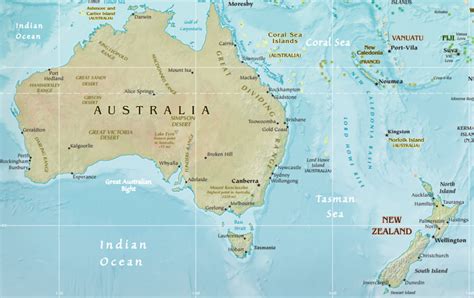
true
UPDATE – Another US airline to report record-high revenues in March is Alaska Airlines. Like American Airlines, Alaska’s revenues for the month exceeded 2019 levels for the first time since the start of the pandemic, the airline said on April 21 in its Q1 statements. Alaska Airlines hits record-high revenues in March.
The trend of March, with strong forward bookings and record cash sales, makes Alaska buoyant for the remainder of 2022. The carrier predicts adjusted pre-tax operating margins of between six and nine percent for the full year, which is in line with its guidance given during the recent Investor Day in March.
Alaska Air Group, which includes Alaska Airlines and Horizon Air, ended Q1 with a $143 million net loss compared to $-131 million in the same quarter of last year. The operating loss was $202 million versus $-161 million, which reflects the drop in bookings in January and parts of February as Omicron cases soared. And it reflects higher expenses, which almost doubled to $1.883 billion from $958 million in 2021. Unsurprisingly, fuel took a large part of that at $347 million compared to $203 million in the same quarter last year. Per gallon, Alaska paid $2.62 for fuel. Fuel costs include a $107 million mark-to-market hedge adjustment.
Total revenues doubled to $1.681 billion from $797 million, of which $1.511 billion is from passengers (2021: $659 million) and $58 million from cargo ($44 million), with the rest coming from the Mileage Plan. The operating cash flow was $287 million thanks to advanced bookings from both leisure and business travelers. Revenue Passenger Miles (RPM) increased by 96.3 percent to 10.6 million. At the end of March, Alaska had $2.9 billion in unrestricted cash and marketable securities.
Guidance takes recent capacity reduction into account
With leisure demand fully recovered and business travel at seventy percent of 2019 levels, Alaska Airlines expects to operate in Q2 at 91 to 94 percent capacity of 2019 levels. Revenues should up by five to eight percent and costs per available seat mile (CASM) excluding fuel up by sixteen to nineteen percent. It calculates a fuel price per gallon of between $3.25 to $3.30, which is lower than the big three airlines have said in their outlook.
The carrier’s guidance takes into account the effects of the recent decision to curb capacity by two percent this quarter through the end of June. This is in response to the unusual high cancelation of flights in late March and early April following an unexpectedly high shortage of pilots and staffing issues. CEO Ben Minicucci called the cancelations “unacceptable” and blamed it on a lower than planned throughput of its pilot training during the quarter. The carrier is working to accelerate throughput “to get us back on track for the year.” Alaska has already hired 2.600 new staff so far this year and has 500 pilots in its training schedule, while some 600 pilots will need retraining as they transfer from Airbus to Boeings.
In response to the situation but also to high fuel prices plus the phasing out of its Airbus A320s, Alaska says that its full-year capacity will grow no higher than 97 percent of 2019 levels compared to its previous guidance of reaching 97 to 99 percent. Full-year CASM is expected to be up by six to eight percent compared to three to five percent in the prior expectation. “Our capacity modifications will be focussed on the least profitable flights. With oil prices where they are currently, capacity reductions can drive better margins in the near term, even though they pressure near term unit costs”, said Chief Financial Officer Shane Tackett. “We are putting in a bit more conservatism into the system”, added Minicucci.
Single fleet likely to be implemented in early 2023
Alaska announced in March that it will accelerate the transition to an all-Boeing MAX fleet. Back then, it said it planned to complete this by the end of 2023, but Minicucci said in today’s investor’s call that he has instructed his team to have it done in early 2023 as it makes little sense to keep training pilots for the Airbus fleet when that will be phased out only months later. “The sooner we can get to s single fleet, the better”, said Tackett.
Medium-term, Alaska will have a mix of seventy Boeing MAX 9s, sixty MAX 10s, and fifteen MAX 8s. In its media statement, it said today that it has modified that order to include six firm orders plus 41 options for the MAX 10 and ten firm orders for the MAX 8. Alaska has no visibility of when the MAX 10 will be certified this year. If it isn’t and no exemption is given for the December 31 deadline, the type faces new legislation that requires all airliners certified from January 1, 2023, to have an Engine Indicating and Crew Alerting System on board. Nat Pieper, Senior Vice President of fleet affairs, said that if Alaska would be confronted with a delay of the MAX 10 and a systems revamp, “it is something that we would reassess. Obviously, the -9 is a great airplane for us. We have twenty of them so far and we have good optionality with Boeing.”
In Q1, the carrier took an impairment charge of $75 million on fleet transition and related charges for phasing out its De Havilland Canada Dash 8-400s from late 2023. Minicucci is getting frequent inquiries about the ten Airbus A321neo’s that it wants to return to lessors as quickly as possible and well before leases expire in 2025, even if that results in some $250 million in lease return costs. Given the strong market demand for the type, he is positive about a solution.
Views: 1



